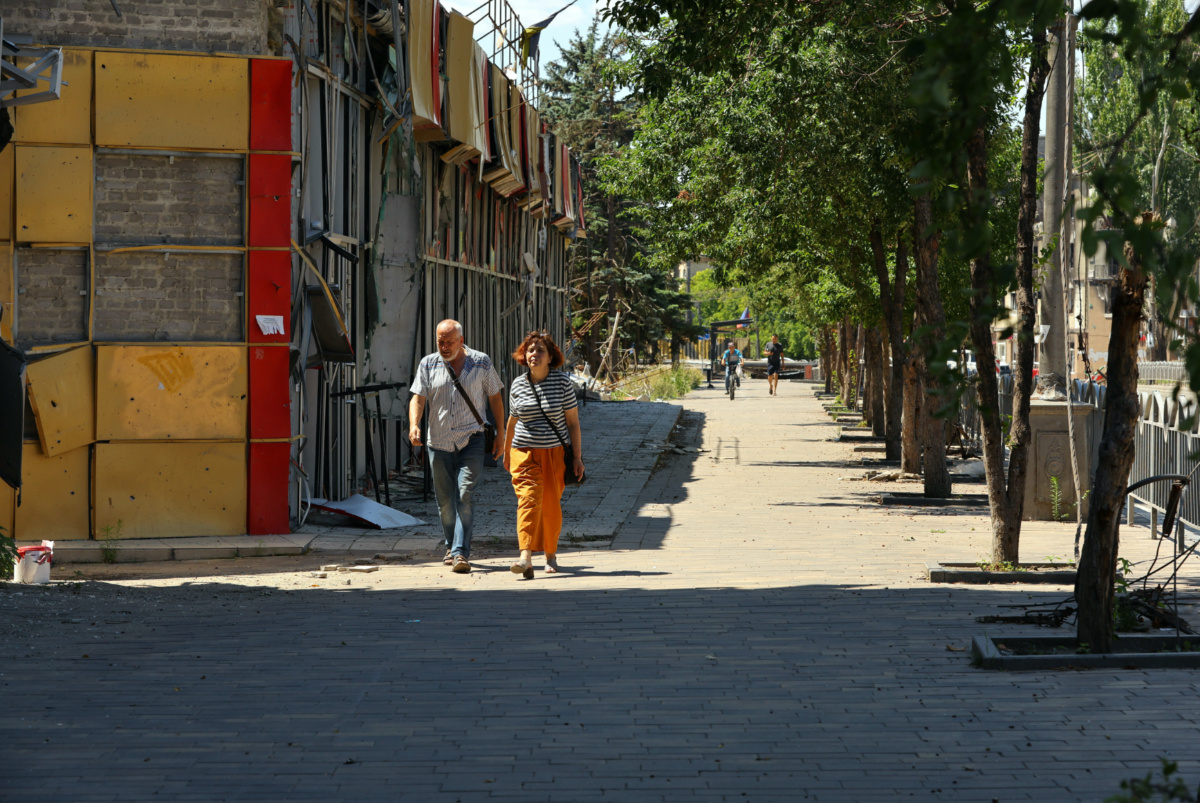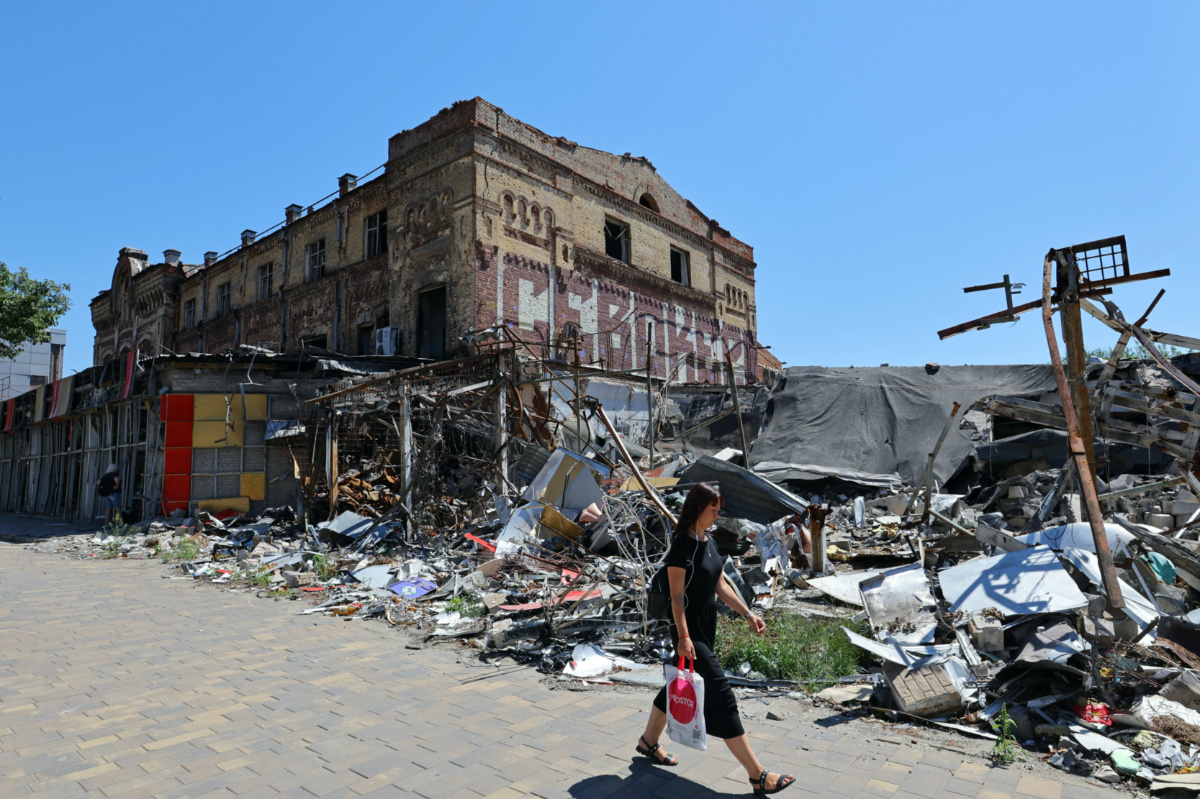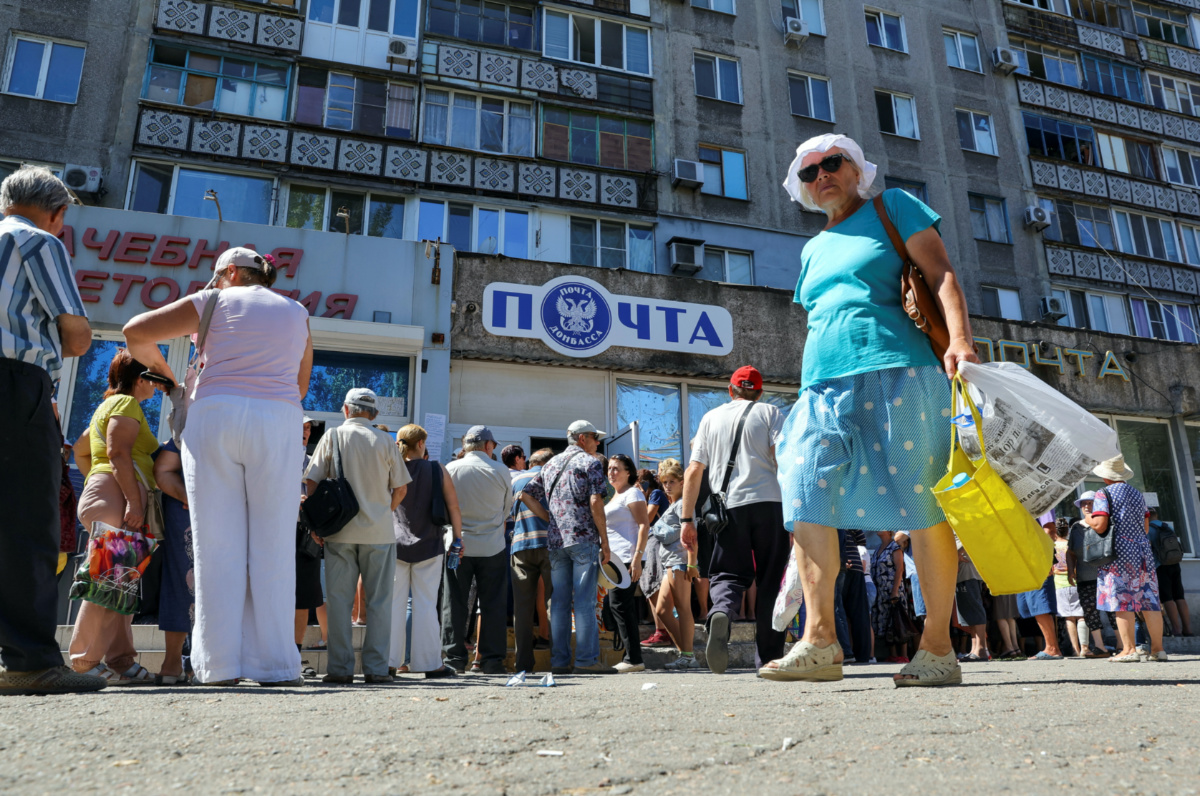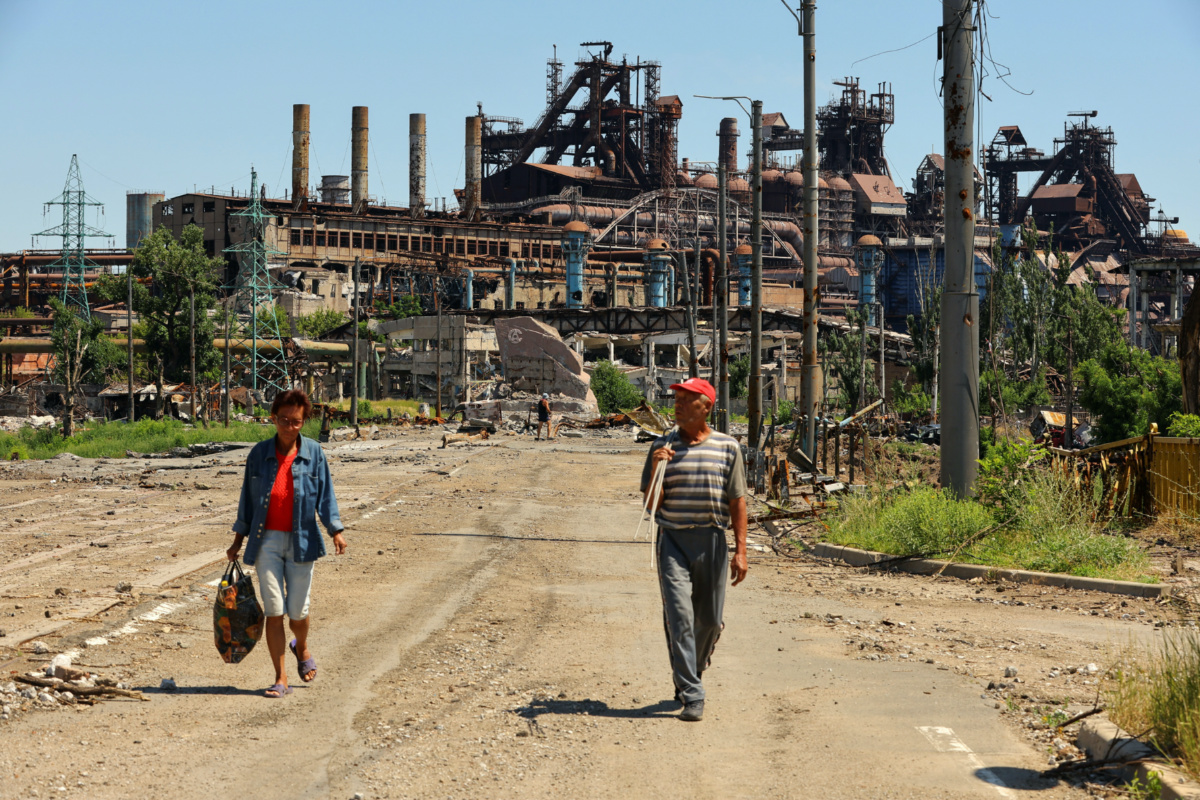
Reuters speaks with residents of Mariupol about life in the city, two months after it was captured by Russia…
Mariupol, Ukraine
Reuters
Fighting for control of this strategic Ukrainian port city ended two months ago with victory for Russia after thousands were killed and hundreds of thousands forced to flee.
Many of those who are left in Mariupol now face a new battle: how to survive, said five residents interviewed by Reuters.

People walk past a building destroyed during Ukraine-Russia conflict in the southern port city of Mariupol, Ukraine, on 15th July. PICTURE: Reuters/Alexander Ermochenko.
The struggle for this once bustling city of 430,000 on the shores of the Sea of Azov left it pulverised and with an estimated population in the tens of thousands.
On a recent visit by Reuters reporters, who were free to speak to locals and were not escorted by Russian-backed officials, five residents said they were struggling to get by despite efforts by the city’s Russian-installed administrators to try to rebuild.
“When the fighting was still going on, we ran on adrenaline to survive. And now the task is to survive so as not to starve to death.”
– Mariupol resident Tatyana Khandeldy
“We hope, of course, for the best, but all this [optimism] is fading every day,” said Tatyana Khandeldy, as she sat outside on a stool with her neighbours surrounded by apartment blocks with their windows blown out, walls covered in bullet and shell holes.
“When the fighting was still going on, we ran on adrenaline to survive. And now the task is to survive so as not to starve to death.”
Among the ruins people like Tatyana boiled kettles and fried potatoes on open fires in their yards, sinks hung off the walls of wrecked apartment blocks like earrings, shower cubicles with no running water stood in yards on wooden pallets, and in places people’s personal belongings still lay on the street where they had been blown by blasts that gutted some apartment blocks.
The United Nations says 90 per cent of the city’s buildings were destroyed after Russia used tanks, artillery and air strikes to try to dislodge its defenders.
A top official from the world body said last month that at least 1,348 civilians had been killed, including 70 children, and that the final toll was probably thousands higher. Kyiv estimates that 22,000 civilians were killed.
The Russian defence ministry did not immediately reply to a request for comment on the death toll, but has previously accused the city’s Ukrainian defenders of using civilians as human shields and of setting up fire points in residential areas. Ukraine denies this.

A woman walks past buildings destroyed during Ukraine-Russia conflict in the southern port city of Mariupol, Ukraine, on 15th July. PICTURE: Reuters/Alexander Ermochenko
Sitting outside with her daughter Sofiya, Anna Malenko, 31, complained she had no work or money to buy food, while a man who gave his name only as Roman pointed to a concrete rubble-strewn wasteland that he said used to be a green yard where dozens of children once played.
“Now there are two or three children left here who really have nothing to do,” said Roman, who said he was a former factory worker.
He described his life as “Groundhog Day” – a monotonous daily grind which involved cooking on open fires in order to feed other locals and children.
Russian diplomats say Moscow is doing its best to return life to normal and Reuters reporters saw locals buying fresh bread in an open-air market.
We rely on our readers to fund Sight's work - become a financial supporter today!
For more information, head to our Subscriber's page.
In a Facebook post this week responding to comments from the White House about Russian plans to annex parts of Ukraine, Russia’s embassy in the United States said Moscow was returning peace to what it called “liberated territories”.
It said there were plans to build about 500 kilometres of roads and bridges in the Donbas region, which includes Mariupol, by the end of this year and that what it called “12 modern condos and a medical centre with high-tech equipment” were being built in Mariupol. It said they should be completed by the autumn.
Ukrainian officials did not respond to a Reuters request for a comment on this article.

People gather near a post office during Ukraine-Russia conflict in the southern port city of Mariupol, Ukraine, on 18th July. PICTURE: Reuters/Alexander Ermochenko
Mariupol is in Ukraine’s industrial Donetsk region, which Moscow says it wants to take full control of in order to ensure its own security against NATO and to protect Russian speakers it accuses Kyiv of persecuting.
Kyiv denies that Russian speakers have been persecuted, and says the allegation is a baseless pretext for an imperial-style war of aggression. It has said it intends to take Mariupol back.
Russian-backed forces tried and failed to seize the city in 2014. It fell to Russia in May this year after a nearly three-month siege during which Ukraine’s Azov Regiment, a far-right paramilitary group later incorporated into Ukraine’s Armed Forces, put up fierce resistance.
Russia continues to hold prisoner many Azov fighters who surrendered, amid fears in Ukraine they could be tried for war crimes and face the death penalty. The Kremlin has promised they will be treated “in accordance with international standards”.
We rely on our readers to fund Sight's work - become a financial supporter today!
For more information, head to our Subscriber's page.
Despite the hardships, two women interviewed by Reuters said they welcomed Moscow’s rule.
“I dreamed all my life that Mariupol would join Russia,” said Khandeldy, the same woman who had complained of the constant struggle to get food.
Pushing a bicycle, Tamara Vasilenko, 63, a pensioner, said many people in the wider region had Russian roots.
“We are glad that we survived, and we are glad that we have found our children. The main thing I believe is that there will be peace here…and Russia will not abandon us.”

People walk near the Azovstal steel mill damaged during Ukraine-Russia conflict in the southern port city of Mariupol, Ukraine, on 15th July. PICTURE: Reuters/Alexander Ermochenko
Amid the summer heat, cranes and excavators toiled to erect new apartment buildings, cars and cyclists trundled through the streets, and a few locals sunbathed on the shores of the Sea of Azov.
A World Health Organisation official and Ukrainian officials have warned that the city, without running water or functioning sewerage systems, is at risk of a cholera outbreak as rubbish and human remains rot beneath its rubble during the summer.
Bullet-riddled tanks, cars and vans baked in the summer sun, and near the twisted metal of the Azov steel plant, a man fished in a stream. Nearby a human skull lay beneath a sheet of metal.
The city’s once grandiose drama theatre, which had served as an air raid shelter, lies in ruins following what Ukraine says was a Russian air strike. Kyiv says hundreds of civilians may have perished. Russia says the theatre was blown up by Ukrainian forces inside, an accusation Kyiv vehemently denies.
Some residents interviewed by Reuters said they recognised things had got a little better since the fighting ended but said the overall situation remained dire.
“There is still no stability, people don’t know what awaits them,” said Lyubov Tarabukhina, a 66-year old pensioner.
“Yes, they are trying to build new housing here, to restore something. But there is still no peace of mind for people.”





